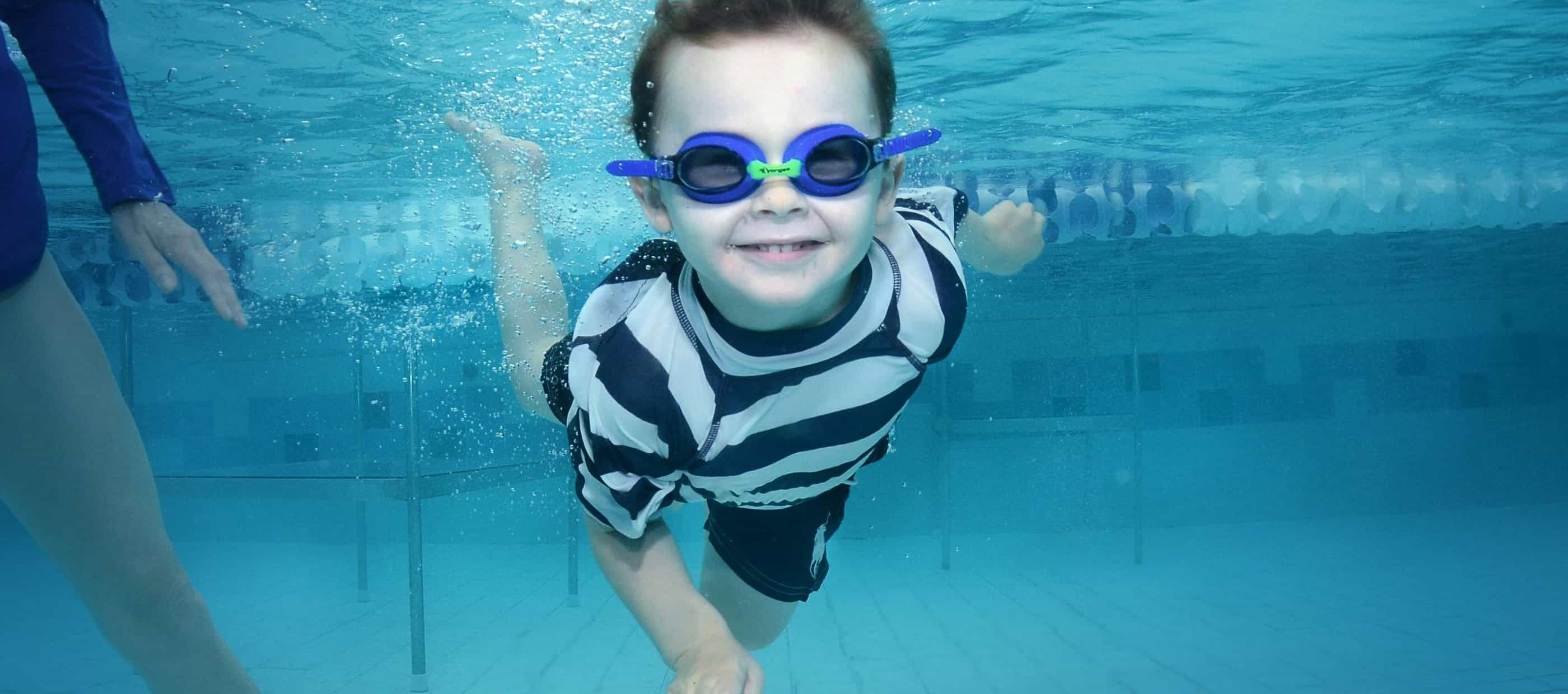If you’re a parent, it’s likely to be a few years ago since you learned to swim yourself and you probably won’t remember too much about the process. In this blog, we’ll jog your memory by giving you a few useful tips to help get your little one up and running (or, should we say, swimming) as fast as possible.
Some kids take to swimming like a duck to water, others find the whole process a lot more challenging. Your local pool might be noisy and intimidating for them, and the water temperature might not feel too inviting for a first-timer.
Getting your child used to the water before swimming lessons begin will take away some of those potential stresses. Fun in the water can start at the earliest age with playing around at bathtime. This can provide a safe and enclosed environment for them to try holding their breath and putting their head underwater.
Gaining confidence in the water
When they’re a little older, you should try a few introductory trips to your local pool to get them used to the environment, making the whole event as fun as possible. That might even include a favourite snack afterwards.
To ensure your child feels safe and confident from the outset, consider using the toddlers' pool, if there is one, or make sure they stay in the shallow end of the grown-ups' pool.
Always stay close so you can step in if they need your support. Play games with them and provide noodle flotation devices to help while they’re learning to tread water. The more time your child spends in the water, the more comfortable they will become and the easier they will find it once the teaching starts for real.
Pass on the basics of water safety
Much of what we assume as adults to be common sense behaviour, in and around water, needs to be passed on to your child at the earliest opportunity, so good habits are ingrained in their consciousness without them having to think about it.
They need to know they should never go swimming on their own and that they need to let an adult know when they’re jumping into the water. If they’re going somewhere that’s out of their depth, they will need to wear a lifejacket and they should be aware of the dangers of those invisible currents in rivers and the sea.
Let the lessons begin…
When it’s time for swimming lessons to start, the first step is all about being able to stay afloat. A good way to approach this is by encouraging your child to lie on their back in the water and then holding them up with a firm hand under their waist and another under their neck. After a while, they will start to feel confident enough to stay afloat on their own.
Praise each small achievement
As with anything in life, the more positive attention you give your child when they make progress in the water, the keener they will become on achieving the next milestone. It can also be motivating to relive those moments of glory on the journey back home or at the dining room table in front of the whole family to increase their sense of achievement.
Find the best swim school you can
While some people are happy to teach their children themselves, many prefer to put their trust in the experts. As the world’s largest independent swim school in the UK, our standards are higher than most.
For over 20 years, we’ve developed knowledge and experience that not just complies with internationally recognised standards but actually plays an active role in forming them. Swimtime is a member of the International Swim School Association that helps to shape the educational and strategic direction of the industry.
Highly-qualified swim teachers
All our teachers are qualified to internationally recognised standards with a swimming teaching qualification at Level 2 from a leading Awarding Body such as Swim England or STA. Our teachers will also have a rescue qualification, First Aid training and safeguarding certification.
Each Swimtime teacher will have been hand-picked by our recruitment experts and verified to ensure your child receives a safe, fun and rewarding learning experience with us.
If you’re interested in learning more about fixing up swimming lessons at the local pool for your child, then you’ll find everything you need to know here.



